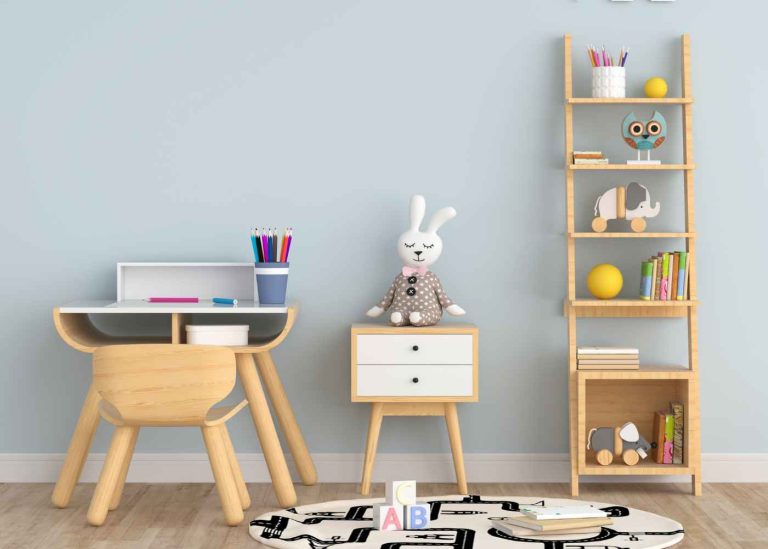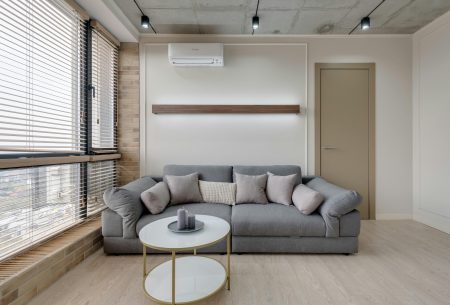Creating a home where children feel comfortable, secure, and happy involves more than just providing basic necessities—it requires thoughtful attention to their physical, emotional, and developmental needs. A well-designed home environment supports children’s growth while giving them the security and comfort they need to thrive throughout their childhood years.
Every aspect of your home, from safety features to furniture choices and daily routines, contributes to your children’s overall well-being and happiness. When children feel secure and comfortable at home, they develop confidence, creativity, and positive associations with family life that last well into adulthood.
Understanding how to create this nurturing environment helps parents make informed decisions about home improvements, furniture, and daily practices that support their children’s development and family harmony.
Establishing Physical Safety and Security
The foundation of a comfortable home environment starts with ensuring your children’s physical safety through appropriate childproofing and security measures. Installing safety latches on cabinets, outlet covers, and stair gates creates protective barriers that allow children to explore safely while giving parents peace of mind.
Secure windows and doors prevent accidents while maintaining proper ventilation and natural light that children need for healthy development. Window guards, safety locks, and secure screening protect curious children from falls while allowing fresh air circulation throughout your home.
Creating clear pathways and removing tripping hazards helps prevent accidents while teaching children to navigate their home environment safely. Well-lit hallways, non-slip rugs, and organized spaces reduce injury risks while promoting independence and confidence in moving through their home.
Regular safety inspections of toys, furniture, and household items ensure that potential hazards are identified and addressed before they can cause harm. This ongoing attention to safety demonstrates your commitment to protecting your children while teaching them to be aware of their surroundings.
Designing Child-Friendly Spaces
Designating specific areas of your home for children’s activities creates spaces where they can play, learn, and express themselves freely without worrying about damaging adult furniture or belongings. These dedicated spaces encourage creativity and independence while containing the inevitable mess that comes with childhood activities.
Why it’s important to add children’s furniture becomes clear when you consider how adult-sized furniture can make children feel excluded or uncomfortable in their own home. Child-sized tables, chairs, and storage solutions allow children to use furniture independently while feeling ownership and pride in their personal spaces.
Flexible spaces that can adapt to different activities and age ranges provide long-term value while accommodating your children’s changing needs as they grow. Modular furniture, adjustable shelving, and multipurpose storage solutions grow with your family while maintaining functionality and comfort.
Creating quiet zones for reading, homework, or rest gives children opportunities to decompress and recharge in peaceful environments. These calm spaces become especially important as children develop and need private areas for reflection and focused activities.
Promoting Emotional Comfort and Security
Establishing consistent daily routines creates predictability that helps children feel secure and comfortable in their home environment. Regular meal times, bedtime rituals, and family activities provide structure that supports emotional development while creating positive family memories.
Personal touches like family photos, children’s artwork displays, and special belongings help children feel valued and connected to their home. These meaningful decorations demonstrate that children’s contributions are appreciated while creating warm, welcoming environments that reflect family personality.
Comfortable gathering spaces where families can spend time together foster communication and bonding that strengthens family relationships. Cozy seating areas, game tables, and technology-free zones encourage interaction and quality time that builds lasting family connections.
Respecting children’s need for both social interaction and privacy helps them develop healthy relationships with family members while learning to enjoy solitude. Balancing family time with personal space teaches important life skills while maintaining family closeness.
Encouraging Learning and Development
Creating organized storage systems for toys, books, and school supplies teaches children responsibility while making it easy for them to find and put away their belongings. Clear labeling, accessible shelving, and designated spaces for different activities promote independence and organizational skills.
Learning environments that include books, educational games, and creative supplies encourage intellectual curiosity while providing entertainment that supports development. Well-stocked art areas, reading nooks, and educational games create opportunities for self-directed learning and exploration.
Technology balance through designated screen-time areas and tech-free zones helps children develop healthy relationships with digital devices while ensuring plenty of time for physical activity, creative play, and face-to-face interaction.
Age-appropriate challenges and activities keep children engaged while building confidence through achievement. Puzzle areas, building zones, and craft stations provide opportunities for skill development while encouraging persistence and problem-solving abilities.
Maintaining Cleanliness and Organization
Regular cleaning routines that involve children teach responsibility while maintaining healthy living environments. Age-appropriate chores and cleaning tasks help children contribute to household maintenance while learning valuable life skills.
Organized spaces reduce stress for both parents and children while making it easier to find belongings and maintain order. Simple organization systems that children can understand and use independently promote responsibility while reducing daily conflicts about tidiness.
Adequate storage solutions prevent clutter accumulation while teaching children to value and care for their possessions. Sufficient closet space, toy storage, and personal organization systems support good habits while maintaining attractive home environments.
Fostering Family Connection
Family traditions and rituals create special memories while reinforcing family bonds and values. Regular family dinners, game nights, and celebration traditions provide stability while creating positive associations with home life.
Open communication practices where children feel heard and valued promote emotional security while building trust between family members. Creating environments where children feel comfortable expressing themselves strengthens family relationships while supporting emotional development.
Creating Lasting Comfort
A comfortable and secure home environment provides the foundation for happy childhood memories while supporting healthy development and strong family relationships. Focus on creating spaces that meet your children’s physical and emotional needs while reflecting your family’s values and personality.
Remember that the most important element of a comfortable home is the love and attention you provide, supported by thoughtful environmental choices that demonstrate your commitment to your children’s well-being and happiness.







